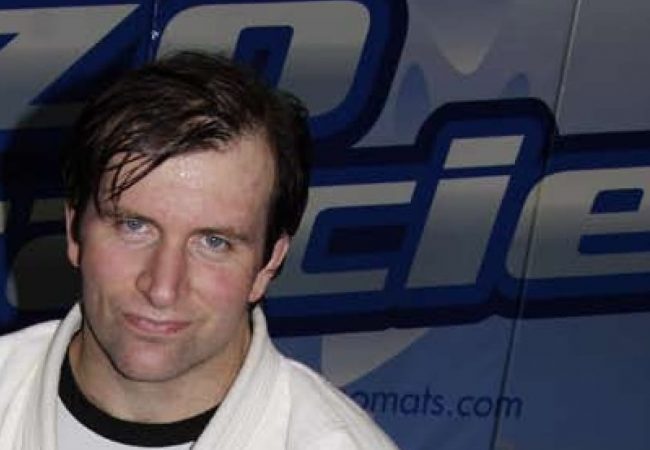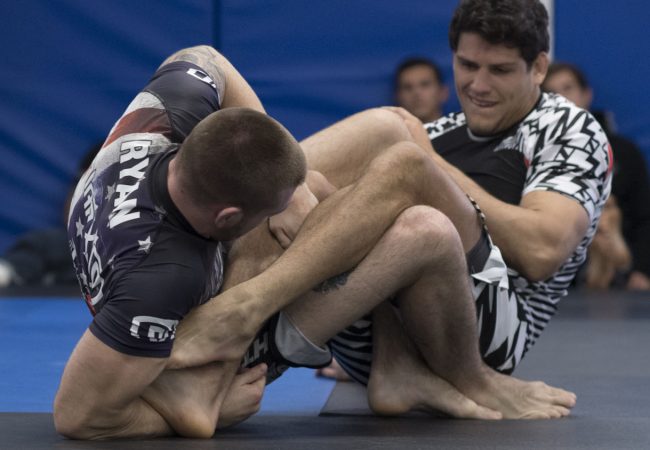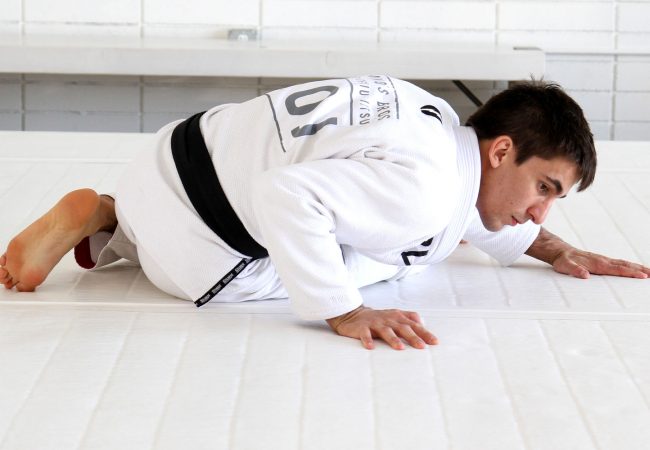[First published in 2010. Scroll down for plain text.]
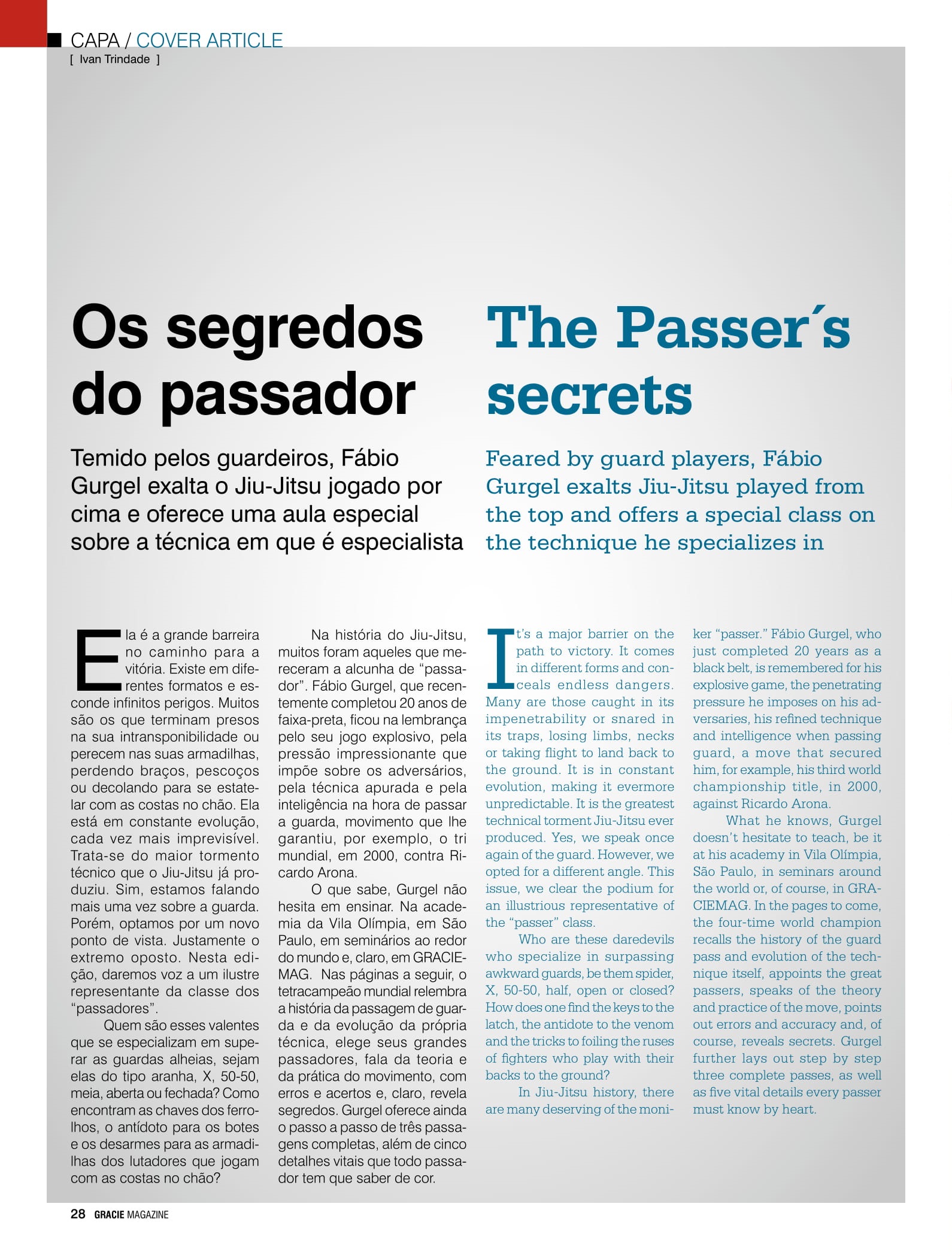
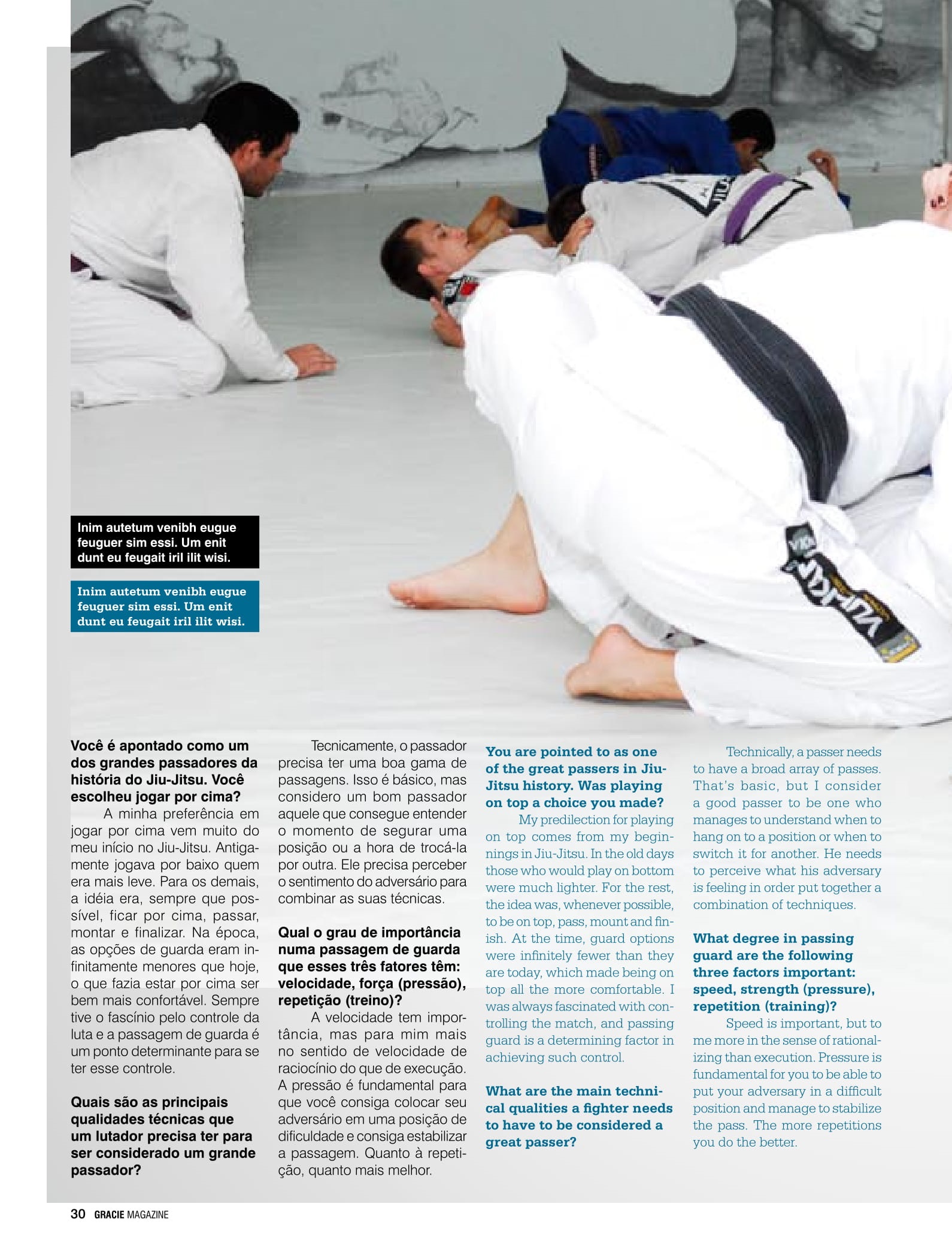
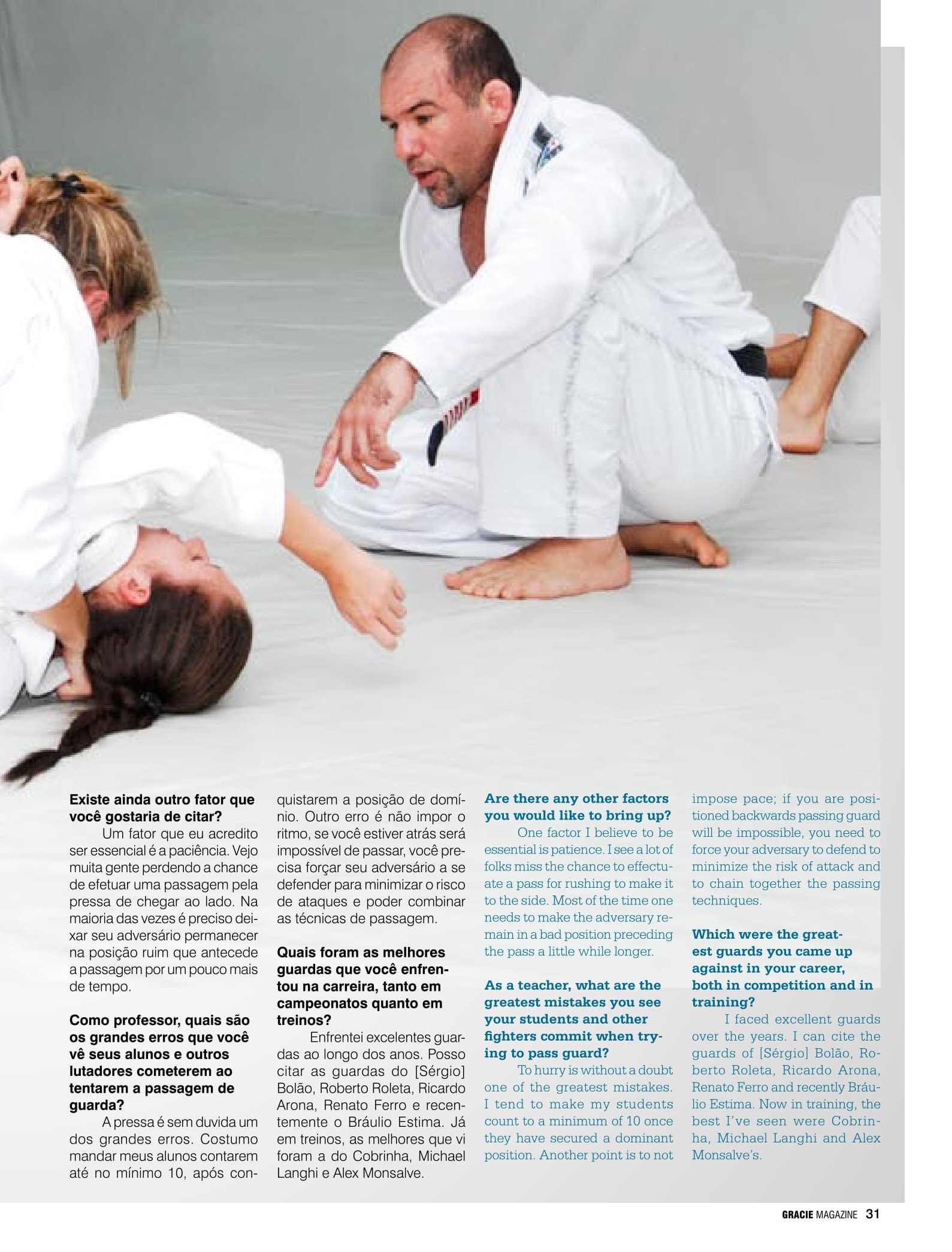
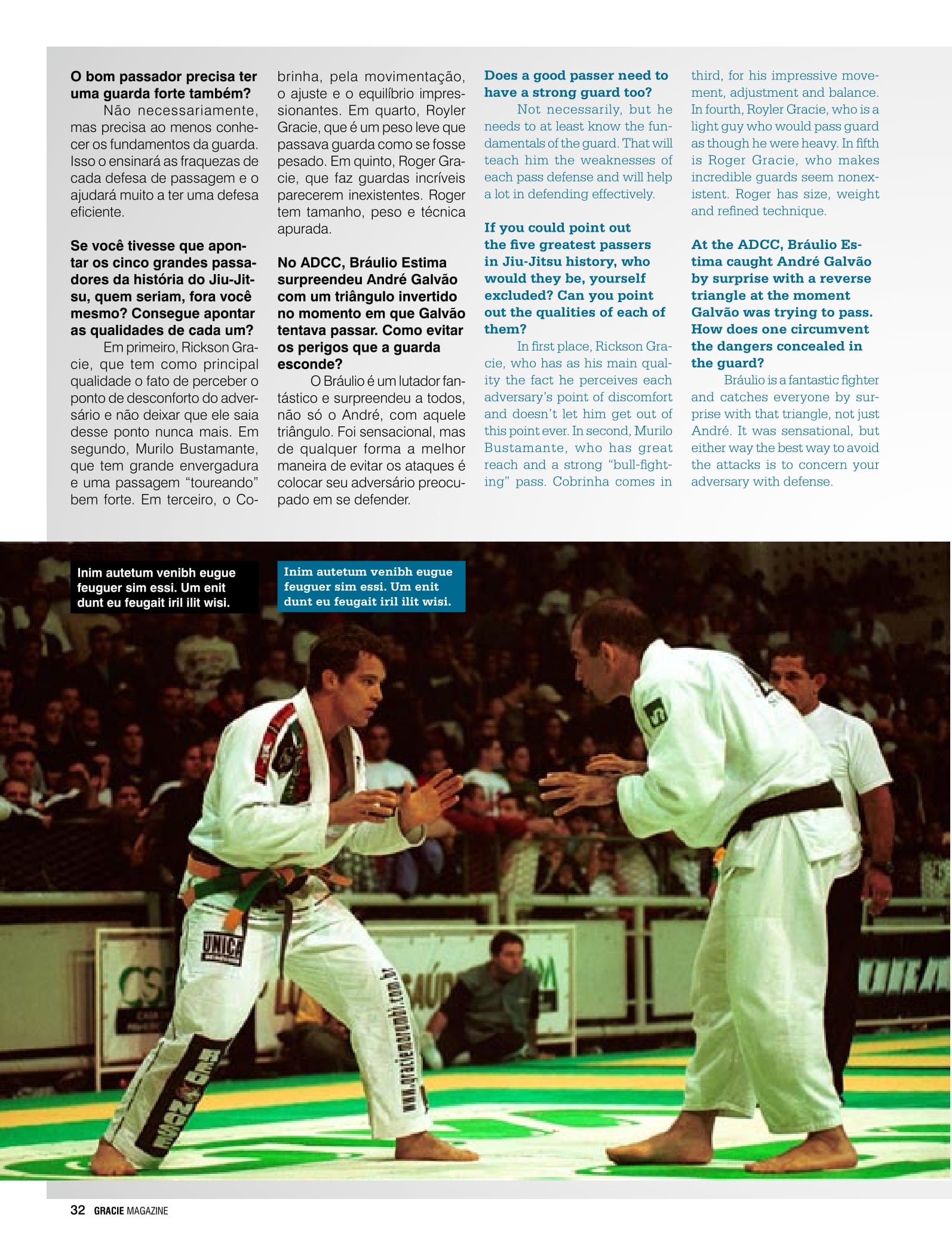
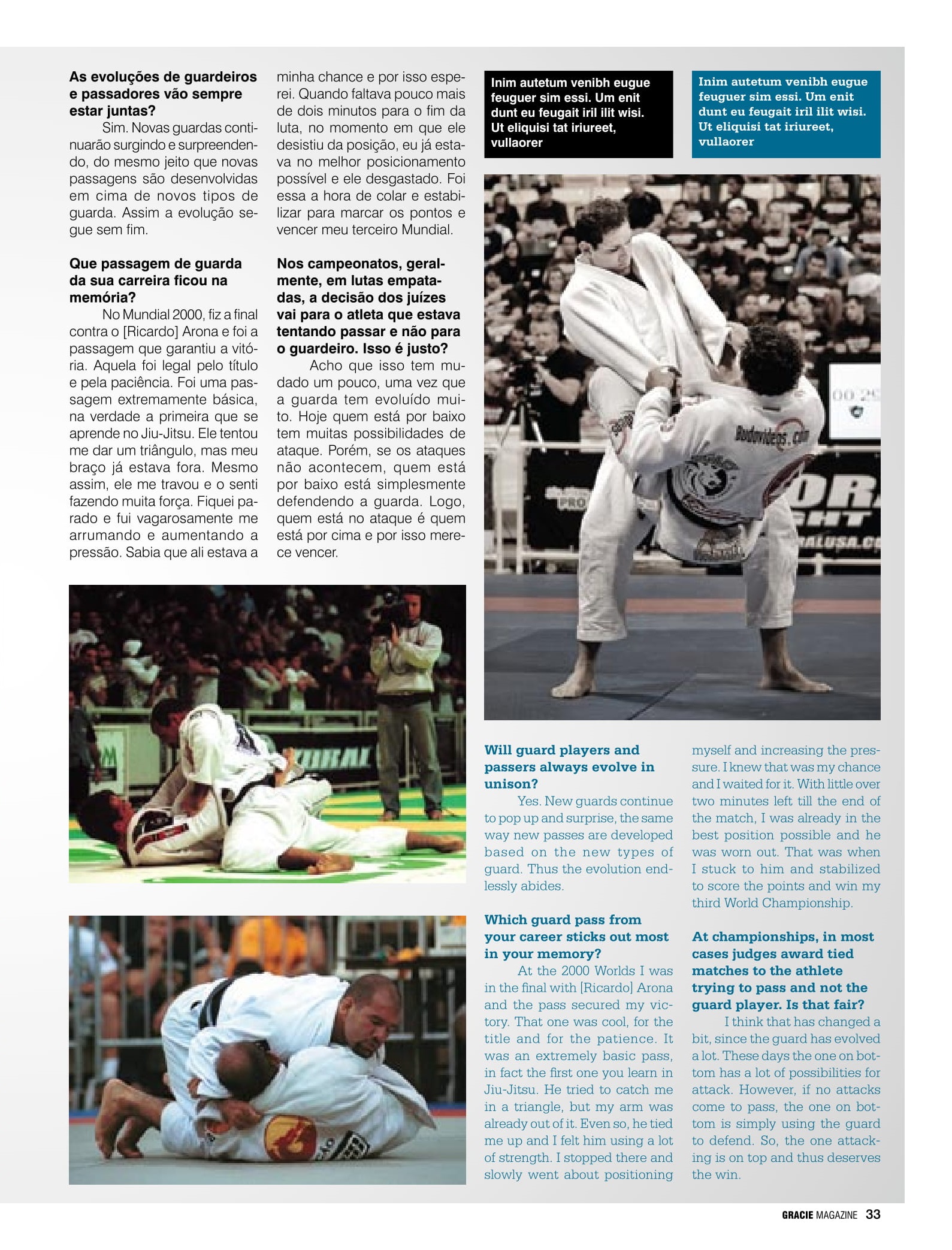
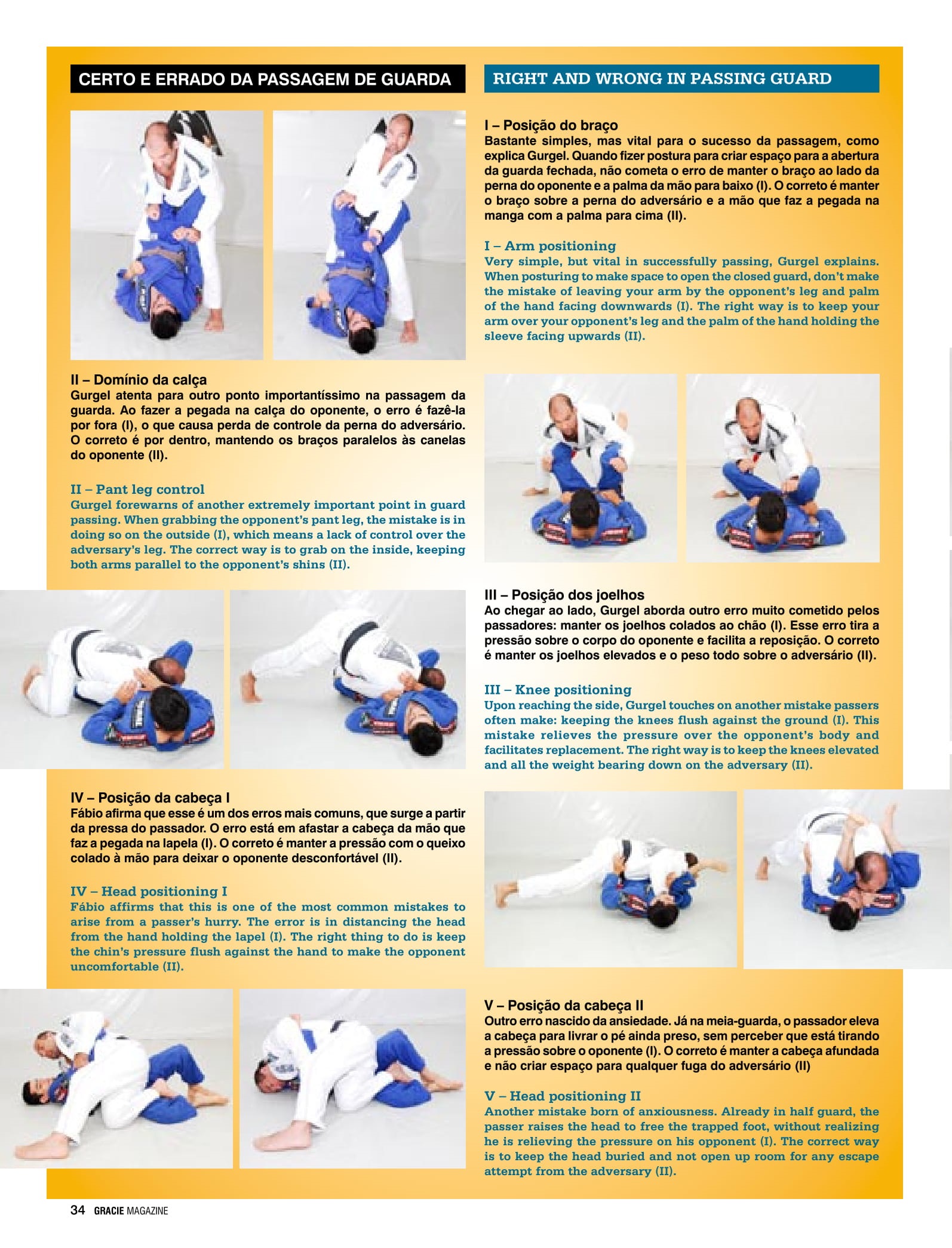
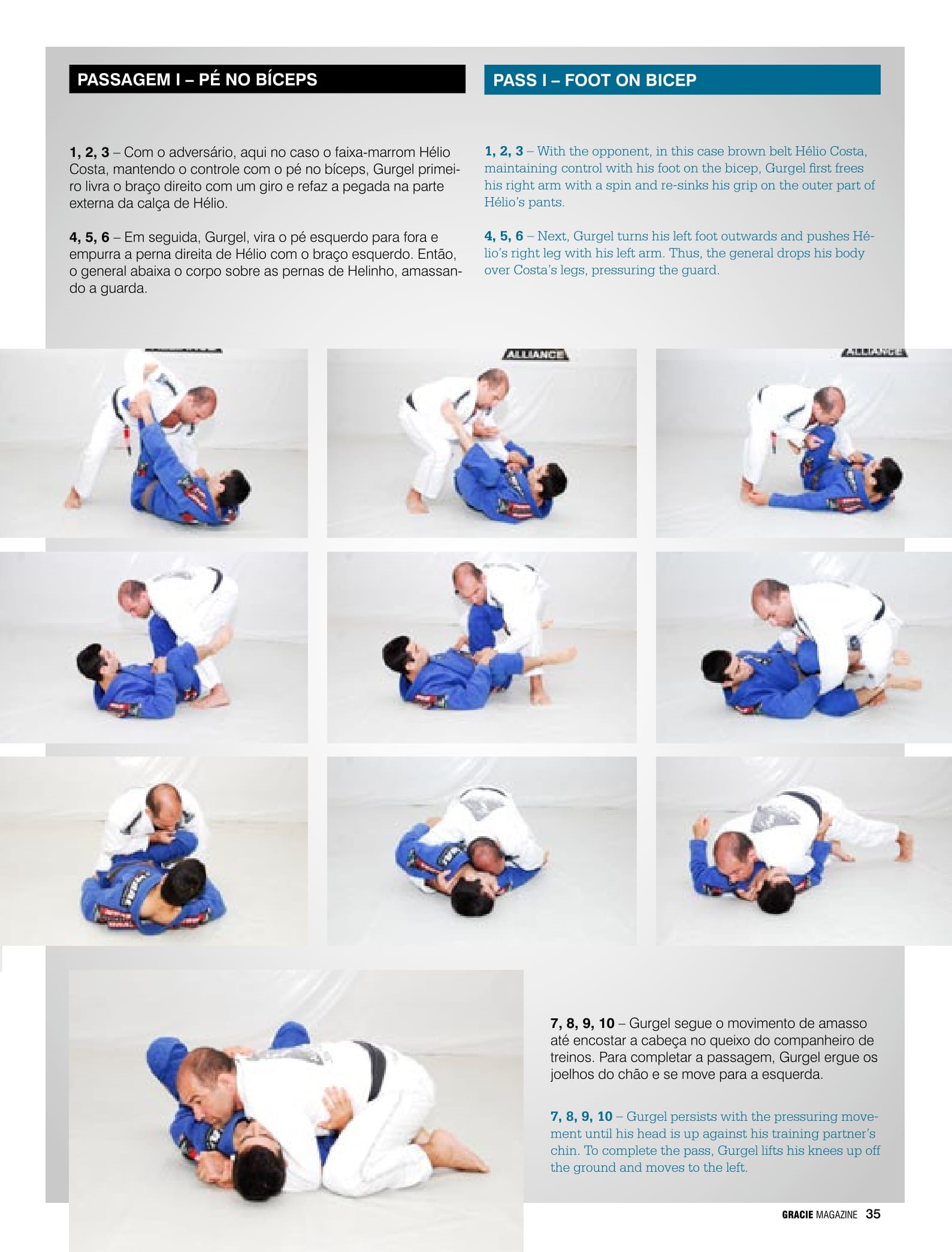
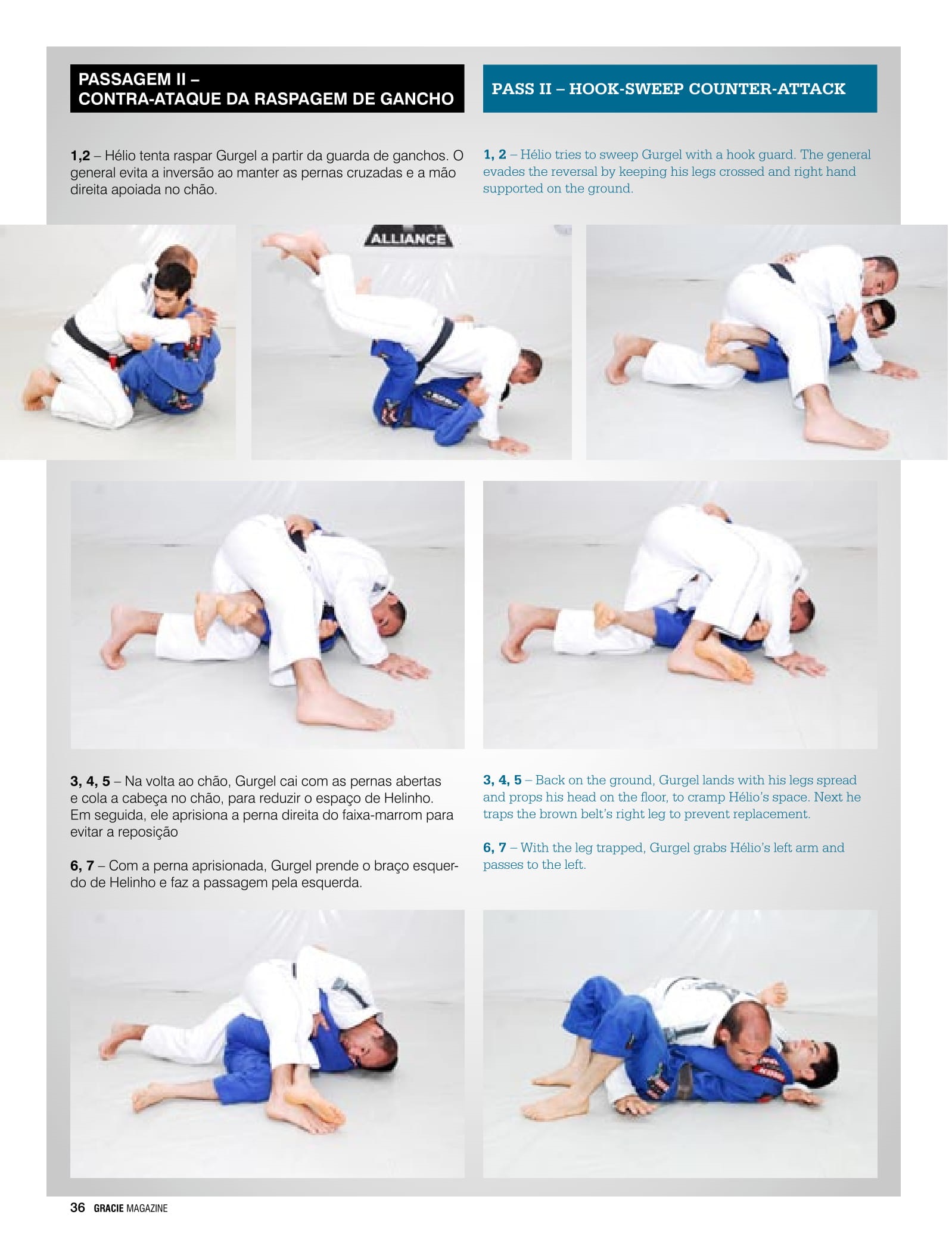
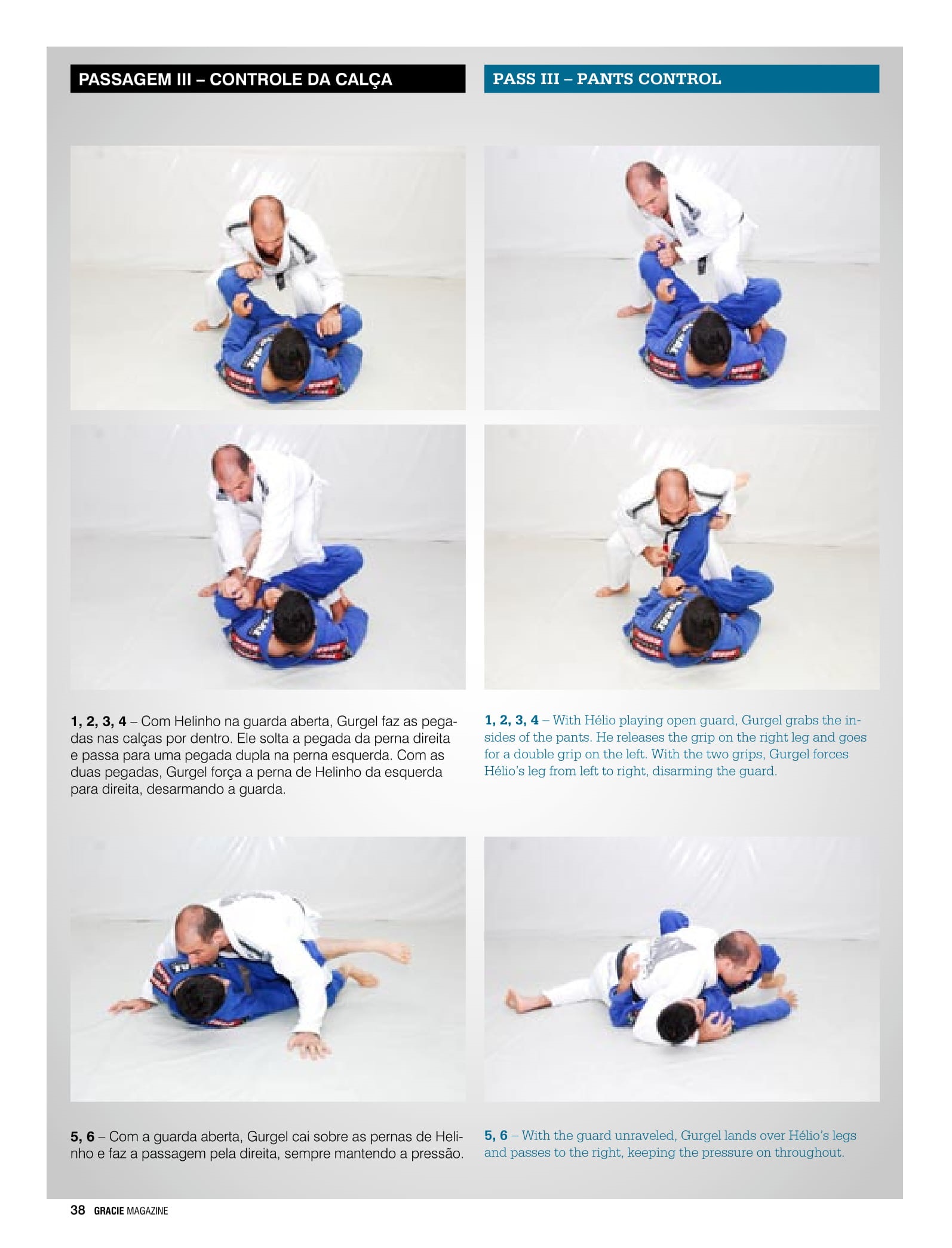
[Consider supporting us on Patreon to keep content like this coming.]
It’s a major barrier on the path to victory. It comes in different forms and conceals endless dangers. –
Many are those caught in its
impenetrability or snared in
its traps, losing limbs, necks
or taking flight to land back to
the ground. It is in constant
evolution, making it evermore
unpredictable. It is the greatest
technical torment Jiu-Jitsu ever
produced. Yes, we speak once
again of the guard. However, we
opted for a different angle. This
issue, we clear the podium for
an illustrious representative of
the “passer” class.
Who are these daredevils
who specialize in surpassing
awkward guards, be them spider,
X, 50-50, half, open or closed?
How does one find the keys to the
latch, the antidote to the venom
and the tricks to foiling the ruses
of fighters who play with their
backs to the ground?
In Jiu-Jitsu history, there
are many deserving of the moniker “passer.” Fábio Gurgel, who
just completed 20 years as a
black belt, is remembered for his
explosive game, the penetrating
pressure he imposes on his adversaries, his refined technique
and intelligence when passing
guard, a move that secured
him, for example, his third world
championship title, in 2000,
against Ricardo Arona.
What he knows, Gurgel
doesn’t hesitate to teach, be it
at his academy in Vila Olímpia,
São Paulo, in seminars around
the world or, of course, in GRACIEMAG. In the pages to come,
the four-time world champion
recalls the history of the guard
pass and evolution of the technique itself, appoints the great
passers, speaks of the theory
and practice of the move, points
out errors and accuracy and, of
course, reveals secrets. Gurgel
further lays out step by step
three complete passes, as well
as five vital details every passer
must know by heart.
You are pointed to as one
of the great passers in Jiu-Jitsu history. Was playing
on top a choice you made?
My predilection for playing
on top comes from my beginnings in Jiu-Jitsu. In the old days
those who would play on bottom
were much lighter. For the rest,
the idea was, whenever possible,
to be on top, pass, mount and finish. At the time, guard options
were infinitely fewer than they
are today, which made being on
top all the more comfortable. I
was always fascinated with controlling the match, and passing
guard is a determining factor in
achieving such control.
What are the main technical qualities a fighter needs
to have to be considered a
great passer?
Technically, a passer needs
to have a broad array of passes.
That’s basic, but I consider
a good passer to be one who
manages to understand when to
hang on to a position or when to
switch it for another. He needs
to perceive what his adversary
is feeling in order put together a
combination of techniques.
What degree in passing
guard are the following
three factors important:
speed, strength (pressure),
repetition (training)?
Speed is important, but to
me more in the sense of rationalizing than execution. Pressure is
fundamental for you to be able to
put your adversary in a difficult
position and manage to stabilize
the pass. The more repetitions
you do the better
Are there any other factors
you would like to bring up?
One factor I believe to be
essential is patience. I see a lot of
folks miss the chance to effectuate a pass for rushing to make it
to the side. Most of the time one
needs to make the adversary remain in a bad position preceding
the pass a little while longer.
As a teacher, what are the
greatest mistakes you see
your students and other
fighters commit when trying to pass guard?
To hurry is without a doubt
one of the greatest mistakes.
I tend to make my students
count to a minimum of 10 once
they have secured a dominant
position. Another point is to not
impose pace; if you are positioned backwards passing guard
will be impossible, you need to
force your adversary to defend to
minimize the risk of attack and
to chain together the passing
techniques.
Which were the greatest guards you came up
against in your career,
both in competition and in
training?
I faced excellent guards
over the years. I can cite the
guards of [Sérgio] Bolão, Roberto Roleta, Ricardo Arona,
Renato Ferro and recently Bráulio Estima. Now in training, the
best I’ve seen were Cobrinha, Michael Langhi and Alex
Monsalve’s.
Does a good passer need to
have a strong guard too?
Not necessarily, but he
needs to at least know the fundamentals of the guard. That will
teach him the weaknesses of
each pass defense and will help
a lot in defending effectively.
If you could point out
the five greatest passers
in Jiu-Jitsu history, who
would they be, yourself
excluded? Can you point
out the qualities of each of
them?
In first place, Rickson Gracie, who has as his main quality the fact he perceives each
adversary’s point of discomfort
and doesn’t let him get out of
this point ever. In second, Murilo
Bustamante, who has great
reach and a strong “bull-fighting” pass. Cobrinha comes in
third, for his impressive movement, adjustment and balance.
In fourth, Royler Gracie, who is a
light guy who would pass guard
as though he were heavy. In fifth
is Roger Gracie, who makes
incredible guards seem nonexistent. Roger has size, weight
and refined technique.
At the ADCC, Bráulio Estima caught André Galvão
by surprise with a reverse
triangle at the moment
Galvão was trying to pass.
How does one circumvent
the dangers concealed in
the guard?
Bráulio is a fantastic fighter
and catches everyone by surprise with that triangle, not just
André. It was sensational, but
either way the best way to avoid
the attacks is to concern your
adversary with defense.
Will guard players and
passers always evolve in
unison?
Yes. New guards continue
to pop up and surprise, the same
way new passes are developed
based on the new types of
guard. Thus the evolution endlessly abides.
Which guard pass from
your career sticks out most
in your memory?
At the 2000 Worlds I was
in the final with [Ricardo] Arona
and the pass secured my victory. That one was cool, for the
title and for the patience. It
was an extremely basic pass,
in fact the first one you learn in
Jiu-Jitsu. He tried to catch me
in a triangle, but my arm was
already out of it. Even so, he tied
me up and I felt him using a lot
of strength. I stopped there and
slowly went about positioning
myself and increasing the pressure. I knew that was my chance
and I waited for it. With little over
two minutes left till the end of
the match, I was already in the
best position possible and he
was worn out. That was when
I stuck to him and stabilized
to score the points and win my
third World Championship.
At championships, in most
cases judges award tied
matches to the athlete
trying to pass and not the
guard player. Is that fair?
I think that has changed a
bit, since the guard has evolved
a lot. These days the one on bottom has a lot of possibilities for
attack. However, if no attacks
come to pass, the one on bottom is simply using the guard
to defend. So, the one attacking is on top and thus deserves
the win.
RIGHT AND WRONG IN PASSING GUARD
I – Arm positioning
Very simple, but vital in successfully passing, Gurgel explains.
When posturing to make space to open the closed guard, don’t make
the mistake of leaving your arm by the opponent’s leg and palm
of the hand facing downwards (I). The right way is to keep your
arm over your opponent’s leg and the palm of the hand holding the
sleeve facing upwards (II).
II – Pant leg control
Gurgel forewarns of another extremely important point in guard
passing. When grabbing the opponent’s pant leg, the mistake is in
doing so on the outside (I), which means a lack of control over the
adversary’s leg. The correct way is to grab on the inside, keeping
both arms parallel to the opponent’s shins (II).
III – Knee positioning
Upon reaching the side, Gurgel touches on another mistake passers
often make: keeping the knees flush against the ground (I). This
mistake relieves the pressure over the opponent’s body and
facilitates replacement. The right way is to keep the knees elevated
and all the weight bearing down on the adversary (II).
IV – Head positioning I
Fábio affirms that this is one of the most common mistakes to
arise from a passer’s hurry. The error is in distancing the head
from the hand holding the lapel (I). The right thing to do is keep
the chin’s pressure flush against the hand to make the opponent
uncomfortable (II).
V – Head positioning II
Another mistake born of anxiousness. Already in half guard, the
passer raises the head to free the trapped foot, without realizing
he is relieving the pressure on his opponent (I). The correct way
is to keep the head buried and not open up room for any escape
attempt from the adversary (II)
PASS I – FOOT ON BICEP
1, 2, 3 – With the opponent, in this case brown belt Hélio Costa,
maintaining control with his foot on the bicep, Gurgel first frees
his right arm with a spin and re-sinks his grip on the outer part of
Hélio’s pants.
4, 5, 6 – Next, Gurgel turns his left foot outwards and pushes Hé-
lio’s right leg with his left arm. Thus, the general drops his body
over Costa’s legs, pressuring the guard.
7, 8, 9, 10 – Gurgel persists with the pressuring movement until his head is up against his training partner’s
chin. To complete the pass, Gurgel lifts his knees up off
the ground and moves to the left.
PASS II – HOOK SWEEP COUNTER-ATTACK
1, 2 – Hélio tries to sweep Gurgel with a hook guard. The general
evades the reversal by keeping his legs crossed and right hand
supported on the ground.
3, 4, 5 – Back on the ground, Gurgel lands with his legs spread
and props his head on the floor, to cramp Hélio’s space. Next he
traps the brown belt’s right leg to prevent replacement.
6, 7 – With the leg trapped, Gurgel grabs Hélio’s left arm and
passes to the left.
PASS III – PANTS CONTROL
1, 2, 3, 4 – With Hélio playing open guard, Gurgel grabs the insides of the pants. He releases the grip on the right leg and goes
for a double grip on the left. With the two grips, Gurgel forces
Hélio’s leg from left to right, disarming the guard.
5, 6 – With the guard unraveled, Gurgel lands over Hélio’s legs
and passes to the right, keeping the pressure on throughout.



